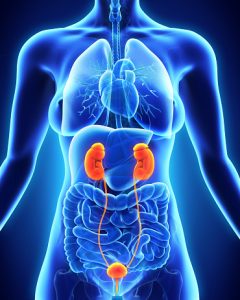
Though this generally only manifests in minor cases of the condition, moderate and severe cases have also been known to appear. In recent years, research has shown inconsistent results on the relationship between chronic kidney disease (CKD) and bone fracture risk. So far, the results have been controversial due to their unstable nature.
A new study was recently published, whose aim was to determine the relationship between decreased renal function and bone mineral density, fracture risk, and the role the thyroid hormone may play in the connection.
The researchers gathered the data from the Longitudinal Aging Study Amsterdam. The participants were 65 years of age or older. The researchers included the data of 1,677 participants into the study. The study had a follow-up period of six years.
Bone mineral density was measured in the participants via dual-energy x-ray absorptiometry. They also measured for vertebral fractures through lateral spinal radiograph. Renal function was assessed in comparison to the five stages of kidney disease. The participants also had blood samples and urine samples taken to determine biochemistry. The researchers analyzed the data in relation to chronic kidney disease, bone mineral density, and the function of the thyroid gland.
Kidney Dysfunction Increases Fracture Risk by Nearly 40 Percent
The results showed that early kidney dysfunction was related to an increase of 38 percent in the risk of fracture in participants 65 and older. This result did not translate to vertebral fractures, however, to which there was no increased prevalence in the participants with renal dysfunction. These findings were true for both older men and women, with the only difference being that men showed a lower bone mineral density in the femoral neck in relation to decreased kidney function.
The researchers believe that sex-related differences are likely responsible for this difference in results. Women naturally have lower bone density than men as they age, so they may not be as affected by kidney dysfunction in this way. The researchers also found that the lower femoral neck bone density in men was related to the specific functions of the thyroid gland on the bone density of the femoral neck.
The researchers found that the increase in risk of fracture was correlated to the increased severity of kidney dysfunction in participants. In other words, the participants with the most advanced chronic kidney disease were also those most likely to experience a fracture out of the sample population. This result has also been shown in other research that claims that end-stage chronic kidney disease increases the risk of an osteoporotic fracture by four times, even in young adult populations.
This study is one of the first to confirm in a consistent way the relationship between a decrease in kidney function in older adults and the related increase in the risk of fracture.
Also read:
- Kidney pain vs. back pain: Understand the difference
- High Fibre Diet Improves Kidney Function, Reduces Chronic Kidney Disease (CKD) Risk
- 15 bone strengthening exercises for strong bones